



Lictor
A broad-shouldered woman in a long coat stands at a
grave, seeing for the first time the withered flowers
that were lain there for her long ago. Those she was stolen from now lie in graves of their own nearby. Slowly, she shuffles out through the gates. As she passes the caretaker, he starts in shock before mumbling an apology: taken aback by the grisly wound that will never close upon her face.
A translucent gnomish teen drifts between the walls and through the doors of an empty house. Though she is no longer tethered to this place, she is not yet sure where she ought to go. She hides in the rafters as a group of newly assembled adventurers, tasked to investigate the local hauntings, approach the house. Perhaps, instead of playing tricks this time, she could ask them what to do...
Pale even for an elf, a slim man watches the streets of a damp city from the lip of a rooftop. He eyes the setting sun with trepidation. At last, he hears the shout of his prey. Leaping into the alley below, he interrupts the robbery with shocking strength, tossing thugs away from their intended victim. The poor child's screams risk attracting the attention of other things of the night, so the man calms him with an enchanting gaze before sending him off home. He does not linger, lest his sire come sniffing for recompense.
Each of these individuals is a lictor, a being that was once risen to serve another as an undead. But where most such beings remain bound as slaves from death until destruction, a lictor has grasped hold of a rare opportunity to escape their chains and reclaim their soul.
The Emancipated Dead
To be a lictor means more than having become undead. In their remaking by a necromancer or other powerful force, these beings were granted the office of some form of greater horror: possessed of uncanny intellect, strength, or other useful attributes to be enhanced in the service of their new master. But what truly sets a lictor apart is that they have escaped their bondage.
Through some strange circumstance and sheer force of will, a lictor has managed to rediscover and rekindle a spark of their humanity. Their very souls, as real and alive as any other, have returned and reclaimed their cursed bodies. Why exactly this has happened is hard to say: perhaps they had an encounter with a higher celestial, or an artifact of unknown magic. Perhaps a vestige of their old self had always remained, only to be awoken by a mission that clashed with their past. The chance to be unstitched from the bonds of necromantic thraldom is the stuff of miracles. And even when presented with such an opportunity, not every soul can champion their own struggle for liberty from under such tragic circumstances — nor can every will weather all the trials a new life will hold for them after freedom is won.
Every lictor's soul is humanoid: subject to all the same emotions, magics, and variations as any other living being. No longer must they be counted among the vile ranks of undeath. But each lictor still bears with them the marks of their office. They stand out from a crowd ‐ and they are likely to suffer its fear. However, by combining their refound humanity with the dark powers now ingrained in them, they each have a chance
for redemption and vindication. A lictor refuses to be defined by what was done to them. Their new life is a constant quest to find out who they were before, and, indeed, who they are now and wish to be.
Creating a Lictor
To create a lictor, consult the following subsections, which give you hit points, proficiencies, and starting equipment. Then look at the Lictor table to see which features you get at each level. The descriptions of those features appear in the “Class Features” section.
Quick Build
You can make a lictor quickly by following these suggestions. First, make Strength or Dexterity your highest ability score. Your next highest score should be Constitution. Finally, choose either the Soldier or Urchin background.
Hit Points
- Hit Dice: 1d8 per lictor level
- Hit Points at 1st Level: 8 + your Constitution modifier
- Hit Points at Higher Levels: 1d8 (or 5 + your Constitution
- modifier per lictor level after 1st
Lictor
| Level | Proficiency Bonus | Features | Spells Known | 1st | 2nd | 3rd | 4th | 5th |
|---|---|---|---|---|---|---|---|---|
| 1st | +2 | Accursed Office, Necromantic Engine | — | — | — | — | — | — |
| 2nd | +2 | Fighting Style, Spellcasting | 2 | 2 | — | — | — | — |
| 3rd | +2 | Soul Survivor, Wrack Foes, Accursed Office Feature | 3 | 3 | — | — | — | — |
| 4th | +2 | Ability Score Improvement | 3 | 3 | — | — | — | — |
| 5th | +3 | Extra Attack | 4 | 4 | 2 | — | — | — |
| 6th | +3 | Unrelenting Animus | 4 | 4 | 2 | — | — | — |
| 7th | +3 | Accursed Office Feature | 5 | 4 | 3 | — | — | — |
| 8th | +3 | Ability Score Improvement | 5 | 4 | 3 | — | — | — |
| 9th | +4 | ─ | 6 | 4 | 3 | 2 | — | — |
| 10th | +4 | Inexorable March | 6 | 4 | 3 | 2 | — | — |
| 11th | +4 | Accursed Office Feature | 7 | 4 | 3 | 3 | — | — |
| 12th | +4 | Ability Score Improvement | 7 | 4 | 3 | 3 | — | — |
| 13th | +5 | ─ | 8 | 4 | 3 | 3 | 1 | — |
| 14th | +5 | Vindication | 8 | 4 | 3 | 3 | 1 | — |
| 15th | +5 | Accursed Office Feature | 9 | 4 | 3 | 3 | 2 | — |
| 16th | +5 | Ability Score Improvement | 9 | 4 | 3 | 3 | 2 | — |
| 17th | +6 | ─ | 10 | 4 | 3 | 3 | 3 | 1 |
| 18th | +6 | Eternal Animus | 10 | 4 | 3 | 3 | 3 | 1 |
| 19th | +6 | Ability Score Improvement | 11 | 4 | 3 | 3 | 3 | 2 |
| 20th | +6 | Become Death | 11 | 4 | 3 | 3 | 3 | 2 |
Proficiencies
- Armor: Light armor, medium armor.
- Weapons: Simple weapons, martial weapons.
- Tools: None.
- Saving Throws: Constitution, Charisma
- Skills: Choose two from Athletics, Arcana, Intimidation,
- History, Religion, Stealth, or Survival.
Starting Equipment
You start with the following equipment, in addition to the equipment granted by your background:
- (a) scale mail, (b) leather armor, or (c) chain mail (if proficient)
- (a) a dungeoneer's pack, or (b) a scholar’s pack.
- (a) a spear, or (b) five daggers.
- A martial melee weapon of your choice and an arcane focus.
If you forgo this starting equipment, as well as the items offered by your background, you start with 4d4 x 10 gp to buy your equipment.
Class Features
As a lictor, you gain the following class features, which are summarized in the Lictor table.
Accursed Office
1st-level lictor feature
Those responsible for your undeath raised you with specific duties in mind. Choose the office you were made for: Office of the Apparition, Office of the Clattering Legion, Office of the Death Knight, Office of the Shambling Flesh, Office of the Tomb Guardian, Office of the Tribute, Office of the Underlich, Office of the Vampire Ward, or Office of the Wailer, each detailed after the class's description. Your choice grants you features at 3rd level, and again at 7th, 11th, & 15th level.
1st-level lictor feature You are now kept alive ‐ after a fashion ‐ by the necromantic magic that turns within you. You don’t need to eat, drink, or
Necromantic Engine



breathe. The energy of nearby death also fuels your ongoing quest for vindication. When a creature of size Small or larger within 30 feet of you is reduced to 0 hit points, your Necrom-antic Engine gains a charge. A charge lasts for 1 hour, and you can hold a maximum number of 2 charges at once.
On your turn while you are not incapacitated, you can exp-end any number of charges you currently have as a bonus action to regain 2d4 hit points per charge expended. Alternat-ively, you can expend any number of charges when you successfully hit with a melee attack to cause that attack to deal an additional 2d4 necrotic damage per charge expended.
The maximum number of charges your Necromantic Engi-ne can hold increases as you gain levels in this class: up to 3 charges at 5th level, 4 charges at 11th level, and 5 charges at 17th level.
Fighting Style
2nd-level lictor feature
You adopt a particular style of fighting as your specialty. Choose one of the following options. You can’t take a Fighting Style option more than once, even if you later get to choose again.
You have blindsight with a range of 10 feet. Within that range, you can effectively see anything that isn’t behind total cover, even if you’re blinded or in darkness. Moreover, you can see an invisible creature within that range, unless the creature successfully hides from you. You learn two cantrips of your choice from the warlock spell list. They count as lictor spells for you, and Constitution is your spellcasting ability for them. Whenever you gain a level in this class, you can replace one of these cantrips with another cantrip from the warlock spell list. While you are wearing armor, you gain a +1 bonus to AC. When you are wielding a melee weapon in one hand and no other weapons, you gain a +2 bonus to damage rolls with that weapon. When you roll a 1 or 2 on a damage die for an attack you make with a melee weapon that you are wielding with two hands, you can reroll the die and must use the new roll. The weapon must have the two-handed or versatile property for you to gain this benefit. When a creature you can see hits a target, other than you, within 5 feet of you with an attack, you can use your reaction to reduce the damage the target takes by 1d10 + your profici-ency bonus (to a minimum of 0 damage). You must be wieldi-ng a shield or a simple or martial weapon to use this reaction. When you make your first attack on your turn, you can decide to strike with extra lethality in exhange for opening up your own defense. Doing so means your melee weapon Your unarmed strikes can deal bludgeoning damage equal to 1d6 + your Strength modifier on a hit. If you aren’t wielding any weapons or a shield when you make the attack roll, the d6 becomes a d8. At the start of each of your turns, you can deal 1d4 bludgeoning damage to one creature grappled by you. 2nd-level lictor feature You have learned to draw on the necromantic magic that now sustains you to cast spells. See Spells Rules for the general rules of spellcasting and the end of this class description for the lictor spell list.
The Lictor table shows how many spell slots you have to cast your lictor spells of 1st level and higher. To cast one of these spells, you must expend a slot of the spell’s level or higher. You regain all expended spell slots upon finishing a long rest. For example, if you know the 1st-level spell false life and have a 1st-level and a 2nd-level spell slot available, you can cast false life using either slot. You know two 1st-level spells of your choice from the lictor spell list. The Spells Known column of the Lictor table shows when you learn more lictor spells of your choice. Each of these spells must be of a level for which you have spell slots. For instance, when you reach 5th level in this class, you can learn one new spell of 1st or 2nd level. Additionally, when you gain a level in this class, you can choose one of the lictor spells you know and replace it with another spell from the lictor spell list, which also must be of a level for which you have spell slots. Constitution is your spellcasting ability for your lictor spells, since they draw power from the very forces that now animate your body. You use your Constitution whenever a spell refers to your spellcasting ability. In addition, you use your Constitution modifier when setting the saving throw DC for a lictor spell you cast and when making an attack roll with one. Spell Save DC Spell attack modifier = your proficiency bonus +Blind Fighting
Cursed Warrior
Defense
Dueling
Great Weapon Fighting
Interception
Perilous Blows
attack rolls during this turn also score a critical hit
on a d20 roll of 1 lower than usual (for example, on a
19 or 20, rather than just a 20), but attack rolls against
you share the same benefit until the start of your next turn.Unarmed Fighting
Spellcasting
Spell Slots
Spells Known of 1st Level and Higher
Spellcasting Ability
Spellcasting Focus
You can use an arcane focus (see Chapter 5 of the Player's Handbook) as a spellcasting focus for your lictor spells.
Soul Survivor
3rd-level lictor feature
The fact that your mind and morality have endured the process of becoming undead is a testament to your resolve, unwilling to bend. You have advantage on saving throws made against magic from the schools of enchantment or necroman-cy, as well as against other effects that would cause you to be charmed or frightened.
3rd-level lictor feature You gain the ability to extend the foul powers that fuel you temporarily, using that energy to inflict various woes upon your enemies. You can create two such effects: Wrack With Pain and an effect determined by your office.
When you take the Attack action on your turn, you can replace one of the attacks with a use of this feature. When you do so, you choose which effect to create out of those available to you. The save DC of your Wrack Foes effects equals your lictor spell save DC. Once you have used this feature once, you cannot do so again until you gain a charge for your Necromantic Engine feature, or upon completing a long rest. At the end of your turn, you can also choose to expend a lictor spell slot to regain the use of this feature. You extend the agony of undeath to enemies around you. Creatures of your choice within 10 feet of you must succeed on a Constitution saving throw or take necrotic damage equal to 2d6 + your lictor level. On a successful save, a creature takes half as much damage. A creature that fails this save by 5 or more also has disadvantage on Constitution saving throws made to maintain concentration for 1 minute, includ-ing on a save made against the damage taken from this effect. 4th-level lictor feature When you reach 4th, 8th, 12th, 16th, and 19th level, you can increase one ability score of your choice by 2, or you can increase two ability scores of your choice by 1. As normal, you can’t increase an ability score above 20 using this feature.
5th-level lictor feature You can attack twice, rather than once, whenever you take the Attack action on your turn.
6th-level lictor feature Your restless body no longer feels the effects of decay nor age, and you cannot be aged magically. You begin to feel the
effects of exhaustion only if the number of levels of exhaus-tion you are suffering exceeds your proficiency bonus. Moreover, when you are reduced to 0 hit points, you can expend a lictor spell slot to sustain your body with a surge of magic. If you do so, you are not knocked unconscious. You still must make death saving throws, and you suffer the nor-mal effects of taking damage while at 0 hit points. However, if you would die due to failing death saving throws, you don’t die until this effect expires, and you die then only if you still have 0 hit points. This effect lasts until the end of your next turn for a 1st-level spell slot, plus 1 additional turn for each spell level higher than 1st. 10th-level lictor feature Whenever you roll damage dice due to one of your Wrack Foes effects, roll two extra dice for each type of damage dealt.
In addition, when a creature of size Small or larger within 30 feet of you is reduced to below half of its hit point maximu-m for the first time since its last long rest, you become aware of this fact, and your Necromantic Engine gains a charge. 14th-level lictor feature Although nothing has come easy, you have reclaimed some of your old identity through immense work. What you had sown in a life gone by, you now reap at last. You gain one of the following benefits of your choice as befitting your former life. Any spells you learn in this way count as lictor spells for you.
18th-level lictor feature You cannot be killed instantly by massive damage, or have your body altered or destroyed by effects that would do so after reducing you to 0 hit points. In addition, whenever you expend a spell slot using your Unrelenting Animus feature, your sustaining burst of magic lasts for one additional turn.
20th-level lictor feature You are now immune to necrotic and poison damage. In addition, whenever you roll initiative, your Necromantic Engine gains one charge.
Below are the accursed offices you can choose from at 1st level. Each has wrought its own dramatic transformation upon those raised to fulfill its damned undertaking.Wrack Foes
Wrack With Pain
Ability Score Improvement
Extra Attack
Unrelenting Animus
Inexorable March
Vindication
Eternal Animus
Become Death
Accursed Offices
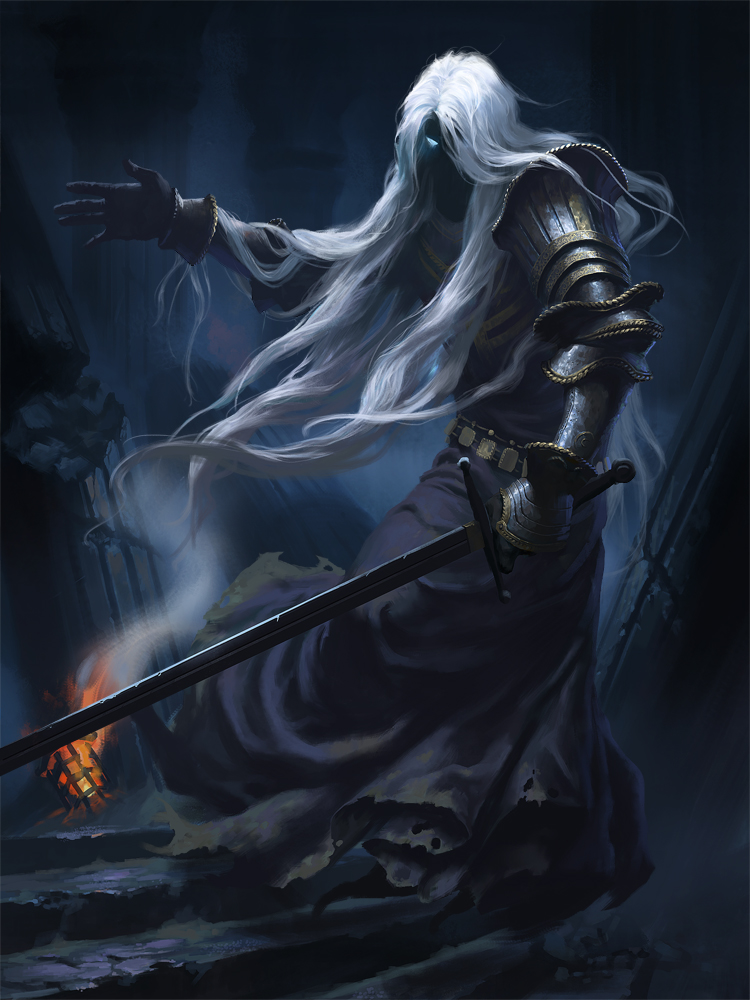






Office of the Apparition
Bound to this plane as a ghost, specter, wraith, or similar incorporeal being, you are a manifestation of raw emtoional scarring. Whatever force enabled this shadow of your afterlife to linger on most likely fed these feelings ‐ of grief, anger, or perhaps envy ‐ until it seemed like that was all you were.
Your mind may now be more your own, but your body remains forever lost. You move through your renewed life as an insubstantial form, but still determined to leave those that have crossed you feeling the keen edge of your conviction.
Incorporeal Form
1st-level Office of the Apparition feature
You can move through other creatures as if they were difficult terrain, and creatures gain no benefit from shields or half-cover against your melee attack rolls.
At the start of your turn, you can also choose to concentr-ate as if on a spell in order to move through objects of size Large or smaller, including doors or windows but not solid walls. An object counts as difficult terrain. You can do so a number of times equal to your Constitution modifier, and regain all expended uses upon completing a long rest. You take 1d10 force damage if you end your turn inside an object.
You also possess a mark of office that advertises your undead nature. Choose your mark from the Apparition Marks table or determine it randomly.
Apparition Marks
| d6 | Appearance |
|---|---|
| 1 | Although you appear solid, you glow constantly with a faint, cold light, or otherwise brim with shadow. |
| 2 | Your hair or clothes flutter in nonexistent wind. |
| 3 | The edges of your extremities fade to invisibility. |
| 4 | Your voice carries a distant echo. |
| 5 | You appear to hover a half-inch or so off the ground at all times. |
| 6 | The air around you is chill as winter. |
The Old Haunt
1st-level Office of the Apparition feature
When you gain this feature, choose a location that you know, which can be inside or outside, with a total area no more than 20 cubes, each cube being 10 feet on each side and arranged as you wish. This location becomes bound to you as your haunting ground. While you are on the same plane of existence as your haunting ground, you can use an action to do one of the following:
- See and hear through an invisible sensor that you place somewhere within it. You are blind to your own senses while doing so. You can stop viewing through the sensor at any time as an action. A creature that can see the sensor (such as a creature benefiting from see invisibility) sees a luminous, intangible illusion of you in its place.
- Speak into the haunting ground at any volume ranging from faint whispers to thunderous shouts, either from one location within it or several simultaneously.
- Create an effect of the thaumaturgy cantrip within it.
- Move objects within it as if by the mage hand cantrip. This version of the hand can carry or move objects that weigh up to your lictor level x 10 in pounds.
You can designate a new haunting ground by spending at least 24 hours roaming between each contiguous area of the intended location while concentrating on it, as if on a spell, at the end of which the new location becomes your haunting ground, and the original location is no longer bound to you.
Wrack Foes: Wrack with Grief
3rd-level Office of the Apparition feature
You unleash an awful wail of raw emotion that washes over your enemies. Creatures of your choice within 20 feet of you must succeed on a Wisdom saving throw or take 2d6 psychic damage and fall prone, being unable to stand until the end of your next turn. A creature that fails its save by 5 or more is also incapacitated for the duration.
7th-level Office of the Apparition feature Once per turn when you move through a creature, you can cause that creature to take 1d8 force damage.
This damage increases to 2d8 at 11th level, and 3d8 at 15th level.Painful Presence
Improved Incorporeal Form
11th-level Office of the Apparition feature
Your melee weapon attacks can now deal necrotic or force damage (your choice), instead of their normal damage type.
In addition, you can now move through objects of any size, including solid walls, without the need to concentrate or expend uses of your Incorporeal Form feature. As an action, you can instead touch one creature and expend a use of that feature to share this benefit with it until the start of your next turn. If you end your turn inside an object, you take 1d10 for-ce damage, as normal. If a creature sharing this benefits ends its turn inside an object, it is immediately shunted to the nea-rest unoccupied space outside of the object, taking 1d10 force damage for every 5 feet it was shunted.
Possession
15th-level Office of the Apparition feature
As an action, you can attempt to possess a humanoid within 100 feet of you that you can see and that isn't being warded by a protection from evil and good or magic circle spell. The target must make a Charisma saving throw. On a failure, you vanish, and the target becomes incapacitated and loses con-trol of its body. On a success, the target resists your efforts to possess it, and you can't attempt to do so again for 24 hours.
Once you possess a creature's body, you control it. Your game statistics are replaced by the statistics of the creature, though you retain your alignment and your Intelligence, Wisdom, and Charisma scores. You retain the benefit of your class features, but lose the benefits of any features granted by your race or this office. If the target has any class levels, you can't use any of its class features.
The possession lasts until the body drops to 0 hit points, you became incapacitated, or you end it as an action. It can also be ended early by a dispel evil and good spell or similar magic targeting the body. When the possession ends, you re-appear in an unoccupied space within 5 feet of the body, and the target becomes immune to your possession for 24 hours.
Once you attempt to possess a creature, you must comple-te a long rest before you can do so again, unless you expend a lictor spell slot of 4th-level or higher to do so.


Office of the Clattering Legion
Whoever you were in life, that was so long ago the memory has been worn away like the edges of a smoothed stone. You have long since been reduced to the most basic bodily form and capability. One skull in the countless legions of oss at your old master's command.
A single skeletal minion might frighten an uninitiated commoner, but won't phase seasoned heroes. Against such threats, skeletons are deployed as a chattering, rattling swarm; and the highest of necromancers alter the marrows of their legions to better bar the path of undesirable intrusion to their realm. Though their pale guards stand like wheat for reaping upon the field of battle, the ensorcelled bones end-lessly reassemble and grow fresh constructs for the grinder.
In your reawakening, you have inherited this cursed power: the mark of how you have been weighed and found to be utterly expendable. Yet, now once a husk, you have become a seed. If what remains of you bears so little quality, perhaps you shall make up for it in quantity...
Fleshless Rank and File
1st-level Office of the Clattering Legion feature
When you take damage, you can expend a Hit Die to break off a piece of bone into a rapidly assembling skeletal facsimile, which appears in an unoccupied space within 10 feet of you (no action required). A facsimile created in this way lasts until you complete a long rest. It shares your game statistics, but has none of the equipment you carry, has total hit points equal to your lictor level + the number rolled on your expended Hit Die, and it cannot act on its own except to take a reaction to make an opportunity attack. When it dies, it is reduced into inert gray ash. While at least one of your facsimiles persists, you gain the following benefits:
Joint Action. When you take the Attack action, you can sacrifice an attack you would make to command a facsimile of your choice to make one weapon attack with its natural weapons or a weapon it is wielding. You can do so for each attack you can make with this action. In addition, taking the Dash or Dodge action applies the benefit of that action to you and all of your persisting facsimiles.
Legion. As a bonus action, you can command any number of your facsimiles to move up to their speed and choose one of them to make a weapon attack against a target within its range. In addition, you can use an action to see and hear from the space of a persisting facsimile within 1 mile of you until the end of your next turn.
Necromantic Network. You can cast spells as if you were in a facsimile's space, but must use your own senses to do so. You can also use charges of your Necromantic Engine to restore hit points to one of your facsimiles, rather than to yourself, or to empower a successful weapon attack made by one of your facsimiles.
Worn to Nought
1st-level Office of the Clattering Legion feature
As a skeleton, you gain the following attributes:
- You have disadvantage on Dexterity (Stealth) checks due to the rattling of your exposed bones.
- Your naked finger bones serve as natural weapons if your hand is empty, which deal 1d4 slashing damage on a hit. You use your choice of your Strength or Dexterity modifier for the attack and damage rolls for these weapons. You must use the same modifier for both rolls.
- Creatures have disadvantage on Wisdom (Insight) checks made against you whilst your form isn't disguised.
- You have resistance to poison damage, and advantage on saving throws against the poisoned condition.
You also possess a mark of office that advertises your undead nature. Choose your mark from the Clattering Legion Marks table or determine it randomly.
Clattering Legion Marks
| d6 | Appearance |
|---|---|
| 1 | You walk with the ungainly gait of a puppet, your dry bones folding in disarming ways. |
| 2 | Your teeth chatter hyperbolically in the cold. |
| 3 | When at rest, you collapse into a pile of bone and belongings, rather than sit or lay down. |
| 4 | Left idle, you will begin to mindlessly perform some rote task with stiff, simplistic motions. |
| 5 | Your bones are carved with runes of wicked magics. |
| 6 | Certain of your bones once belonged to other beings, and have been matched with yours by mistake or malice. |
Wrack Foes: Wrack with Tremors
3rd-level Office of the Clattering Legion feature
You beckon to the bones of living beings nearby to shake and struggle within their binding flesh. Each other creature within 10 feet of you must succeed on a Constitution saving throw or take 2d6 bludgeoning damage and become restrain-ed until the end of its next turn as its bones rebel against it. A creature without an internal skeleton succeeds on this save automatically. A creature that fails its save by 5 or more also drops whatever it is holding as the tremors wrack its limbs.
7th-level Office of the Clattering Legion feature You can now manifest your facsimiles wielding ranged weapons, which are comprised of bones and tensioned ligaments. These weapons use the statistics of a shortbow and create their own ammunition when wielded by your facsimiles or yourself in the form of sharpened bone shafts. When a facsimile dies, its bow and any ammunition it created is also reduced to inert gray ash.
In addition, you can now use an action to command all facsimiles within 120 feet of you to make a weapon attack, choosing a target within range for each attacking facsimile. Once you take this action, you can't take it again until you complete a short or long rest, unless you expend a lictor spell slot of 2nd-level or higher in order to do so. 11th-level Office of the Clattering Legion feature Well-acquainted with the sacrificial demands of your station, you have leant into the expendable nature of your own legion. When you or one of your facsimiles takes cold, fire, lightning, or radiant damage, you can use your reaction, or the reaction of one of your facsimiles, to expend a lictor spell slot of 1st-level or higher and send destructive energy chaining between you. When you do so, you and all of your persisiting facsimiles gain the following benefits for 10 minutes:
When you expend a spell to fuel this feature using a spell slot of 2nd level or higher, the damage you deal with melee weapon attacks and to creatures that end their turn within 5 feet of you increases by 1d6 for each slot level above 1st. Whenever you or one of your facsimiles are incapacitated or reduced to 0 hit points, the energy dissipates harmlessly from that creature. You can also douse the energy on yourself and all of your facsimiles at once as an action. You can use this feature once, and regain the ability to do so upon completing a short or long rest. 15th-level Office of the Clattering Legion feature Set on making every splinter of broken bone count, you and your legions of fragile facsimiles gain the following benefits:
Feign Destruction. When you take damage and would expend a Hit Die to create a facsimile of yourself, you can instead cause your bones to scatter in all directions as if you've been destroyed by the blow. When you do so, you gain immunity to the triggering damage, you become vulnerable to bludgeoning damage, your speed is reduced to 0, and you are incapacitated as your bodily form is dispersed over an area filling a 20-foot radius sphere.
Volley of Marrows
Horrendous Abandon
Scattered Remains
Roll the expended Hit Die. At the end of your next turn your bones reassemble in a space of your choice within the area they were scattered, ending all other effects of this feature. Any creatures within the area take bludgeoning damage equal to the twice the number rolled on your expended Hit Die + your Constitution modifier when you reassemble, and you regain the same number of hit points. If you were under the effects of your Horrendous Abandon feature when you scattered yourself, creatures in the area also take any damage you would have applied to your melee weapon attacks as per that feature when you reassemble.
Spread Destruction. When reduced to 0 hit points, your facsimiles can now explode into shrapnel. Creatures within 10 feet of the facsimile when it explodes must succeed on a Dexterity saving throw or take 1d8 piercing damage and 1d8 bludgeoning damage, as well as any additional damage that the facsimile would apply to its melee weapon attacks from your Horrendous Abandon feature, if applicable. A creature takes half as much damage on a successful save.
Rules to Remember: Hit Dice
The powers of this office rely heavily on its supply of Hit Dice — so when choosing this subclass it's important to keep in mind how their usual uses.
Hit Dice are also your source of healing during a short rest. If you've spent them all on other features beforehand, you'll be unable to regain hit points during these rests.
You regain no spent Hit Dice upon completing a short rest. Upon completing a long rest, you restore only half of your spent Hit Dice.
Items and features that restore additional Hit Dice are few and far between (the Draught of Stamina found in the Scrolls of the Unnamed Sage is one such item). It's crucial to deploy this resource carefully over your adventuring days just as a commander manages their forces — be they living or dead!


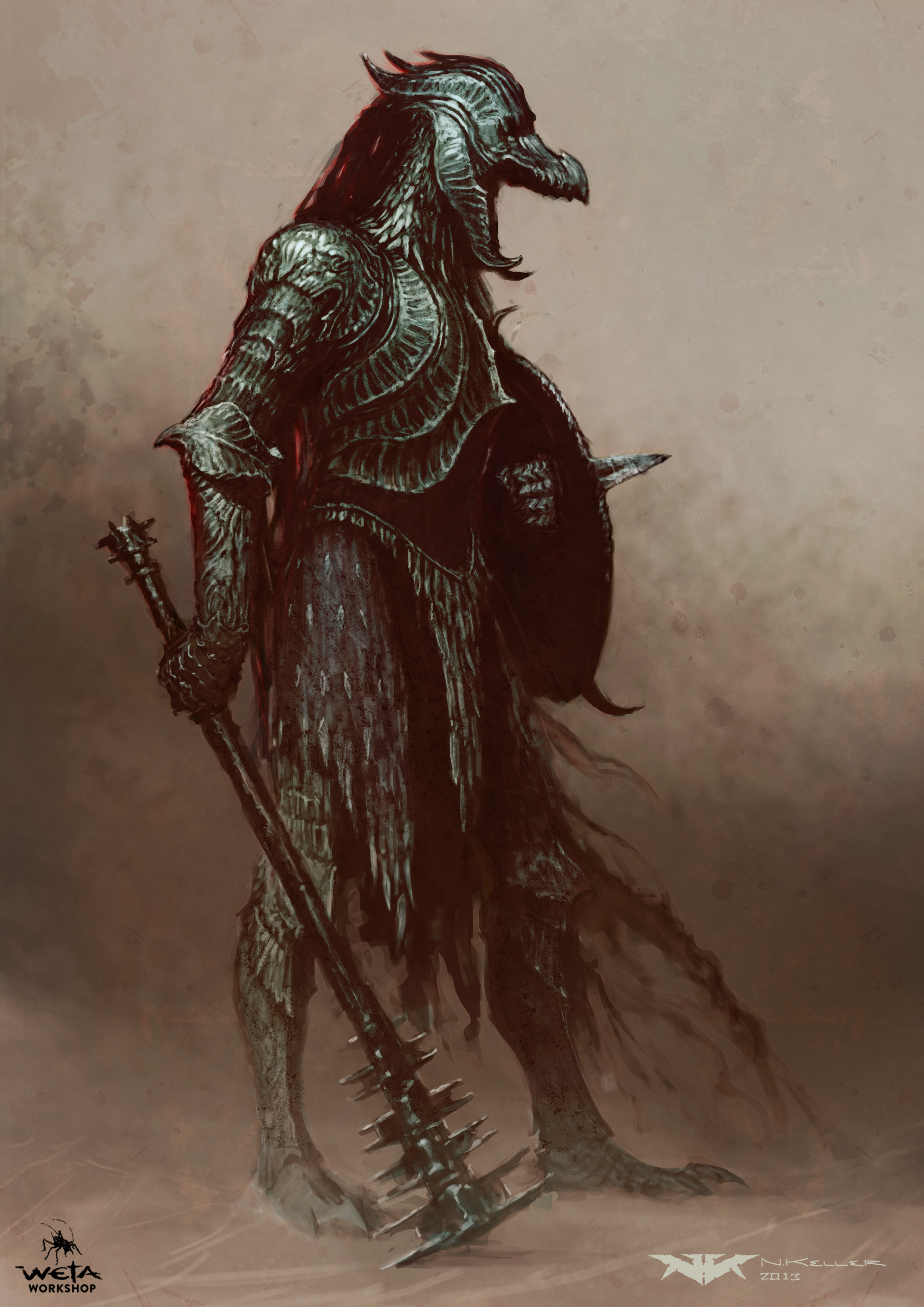
Office of the Death Knight
Skeletal warriors clad in darkly-wrought metal, death knights rank among the most dangerous and frightful of undead forces. And the fault of their fall is invariably their own. A death knight is usually formed from a paladin who committed a tragic sin and never sought redemption ‐ living instead a life of hatred that was only amplified in undeath. Wicked wights or dullahans may also be counted among these officers, having retained their personalities and penchant for violence through appealing to a dark power upon their death.
These knights serve as commanders of fiendish or undead legions, leading slash-and-burn sieges and devastating cavalry charges. As a lictor of this office, you have lost none of your martial prowess, but you have realized at long last how desperately you must find your way again. Having secured
your mortal soul, you are free of the purgatory of a death knight's relentless campaigning; but the quest for ultimate atonement will be long and arduous yet, should you accept it.
Condemned Armory
1st-level Office of the Death Knight feature
Yours is the office of war, and you have been armed accordingly for your cursed crusade. You gain proficiency with heavy armor and shields.
In addtion, cursed items do not count towards your total number of attuned magic items.
Corrupted Gifts
1st-level Office of the Death Knight feature
The twisted remnants of your former magics linger on with you. You learn additional spells when you reach certain levels in this class, as shown on the Corrupted Gifts table. Each of these spells counts as a lictor spell for you, but it doesn’t count against the number of lictor spells you know when you gain the Spellcasting feature at 2nd level.
You also possess a mark of office that advertises your undead nature. Choose your mark from the Death Knight Marks table or determine it randomly. 1st-level Office of the Death Knight feature You bear a dark likeness of a paladin's power. You have a pool of negative energy that replenishes when you take a long rest. With that pool, you can reduce a total number of hit points equal to your lictor level × 5.
After dealing damage to a creature with a melee weapon attack, you can draw energy from the pool to reduce that creature's hit point maximum by the amount drawn, up to the maximum amount remaining in your pool. You cannot lower a creature's hit points below their current total in this way. The reduction lasts until the target completes a long rest.Corrupted Gifts
Lictor Level
Spells
2nd
compelled duel
5th
find steed (ablaze or skeletal in nature)
9th
elemental weapon
13th
staggering smite
17th
destructive wave (necrotic damage only)
Death Knight Marks
d6
Appearance
1
Beneath your helm, your head is a skull eternally
ablaze.
2
Any armor that you don tarnishes within the day.
3
Your skeletal hands rattle and twitch when empty.
4
The attention of lesser undead is drawn to you, for
better or worse.
5
When you move, the creaks of your armor sound
like low, mournful moans.
6
Your heavy footsteps ring overloud, like distant
tolling bells.Pile on Woes



Wrack Foes: Wrack with Hellfire
3rd-level Office of the Death Knight feature
You release a revelation of dark flame that explodes around you. Each creature within 10 feet of you must succeed on a Dexterity saving throw or take fire damage equal to 3d6 + your lictor level. On a successful save, a creature takes half as much damage. You automatically succeed on this save. If a creature fails its save by 5 or more, it also takes an additional 3d6 necrotic damage.
7th-level Office of the Death Knight feature You have lost none of the gravitas in your grave commands. You are immune to being frightened, and when an undead or a fiend that you can see within 60 feet of you makes an attack roll against a creature, you can use your reaction to compel it to make the attack against another creature of your choice (other than itself) within range, instead. If no other target is within range, the attack roll is made at disadvantage. A creature that cannot hear you is immune to this effect.
11th-level Office of the Death Knight feature When you take damage that exceeds your lictor level from an attack or from failing a saving throw, you can claim the swirl-ing energy of sudden doom for your own and strike back with increased vengeance. The first time you hit a creature with a weapon attack before the end of your next turn, the attack deals an additional 2d8 fire or necrotic damage (your choice). An attack can benefit from this additional damage only once.
15th-level Office of the Death Knight feature Calling upon your command of the dead as an action, you raise a force by drawing undead creatures to you through the Shadowfell: perhaps even culling them from the very ranks of armies you once led. The creatures appear in unoccupied spaces you can see within 30 feet of you. Choose one of the following options for what appears:
Statistics for the creatures can be found in the Monster Manual. Each undead summoned fades into shadow when it drops to 0 hit points, or after 1 hour has passed. The summoned creatures are friendly to you and your companions. Roll initiative for the summoned creatures as a group, which has its own turns. They obey any verbal commands that you issue to them (no action required by you). If you don't issue any commands to them, they attack the nearest hostile creatures, but otherwise take no actions. Once you use this feature, you must complete a long rest before you can do so again. With meat and muscle still fresh upon your frame, you were raised to join the lumbering frontline of a dread army. Whether as a zombie, ghoul, or something even more gruesome, you served as little more than a meat-shield until the embers of your old life rekindled your autonomy. Unfortunately, the marks of this office are among the more grisly to behold. And dead flesh, even when sustained by necromancy, is a fine carrier of plague and pestilence, making you an unwelcome sight, or smell, to many. The nature of your undeath and your experience of repeated punishment have made you terribly resilient to harm ‐ the tenacity of your flesh matching the hardiness of your will to keep pressing on in this unlife. 1st-level Office of the Shambling Flesh feature Due to burnt-out, missing, or otherwise transformed nerves, you have a high threshold for pain, which is equal to your lictor level. You ignore non-radiant damage you take that is equal to or below your threshold. Your pain threshold is doubled against necrotic or poison damage.
You also possess a mark of office that advertises your undead nature. Choose your mark from the Shambling Flesh Marks table or determine it randomly.Command Macabre
Wield Death
Raise Legion
Office of the Shambling Flesh
Deadened Pain
Shambling Flesh Marks
| d6 | Appearance |
|---|---|
| 1 | Your eyes are milky white. |
| 2 | Your limbs are strangely twisted, or missing certain chunks of muscle. |
| 3 | Your face is missing one or more prominent features, such as your nose, an ear, or a cheek. |
| 4 | Your body appears painfully bloated, with a festering odor. |
| 5 | Fungal growths have spread rampantly over your body. |
| 6 | You bear the scarring from a failed cremation. |
Rigor Mortis
1st-level Office of the Shambling Flesh feature
With the stiff dead weight of your body, you pull down your foes. Creatures that you have grappled have disadvantage on Strength (Athletics) or Dexterity (Acrobatics) checks made to escape the grapple.
3rd-level Office of the Shambling Flesh feature You issue forth a miasma of festering disease to enemies aro-und you. Creatures of your choice within 10 feet of you must succeed on a Constitution saving throw or become poisoned until the end of your next turn. A creature can be immune to this poison only if it is also immune to disease. A creature that fails its save by 5 or more is poisoned for 1 minute, and the damage of its weapon attacks is halved for the duration.
7th-level Office of the Shambling Flesh feature When you successfully grapple a creature, you can choose to immediately shove it prone as part of the same attack.
11th-level Office of the Shambling Flesh feature A creature grappled by you must make a Constitution saving throw against your lictor spell save DC at the start of each of its turns. On a failed save, it is stunned until the start of its next turn.
15th-level Office of the Shambling Flesh feature Whenever you take damage, you can make a Constitution saving throw with a DC of 5 + half the damage taken, unless the damage is radiant or from a critical hit. On a success, you halve the damage taken; if this reduces the damage taken to below your pain threshold, you ignore it entirely.
You can use this feature a number of times equal to your Constitution modifier, and regain all expended uses upon completing a long rest. Perhaps you were a servant, a slave... or even a being of influence who was punished or usurped. Whatever the case, you were transformed after your death and bound to guard a place of great importance to your creators: tasked with allowing nothing other than your own unnatural presence to profane it. You've retained the fierce protective powers and urges that once fueled chilling tales for grave-robbers and dungeoneers. Now, however, you guard what is yours by choice. Lictors originating from this office are most likely to be mummies or similar undead. Very rarely, a being such as a flesh golem might coalesce something of a consciousness enough to become a lictor of this kind, but such personalities are likely to be simplistic or fractured. Despite their new liberty, tomb guardians of any origin are prone to paranoia, as if, despite all they have achieved, part of their original curse still drives them. 1st-level Office of the Tomb Guardian feature Removed or replaced organs have left precious little for a thief's dagger to puncture when you come upon them in the dark. You gain resistance to piercing damage and darkvision out to a range of 60 feet. If you already have darkvision from your race, its range increases by 30 feet.
In addition, you can extend your withering energies as an action to instantly molder or evaporate up to 1 cubic foot of food or water that you touch. Other nonmagical drinks are spoiled — wine turning to vinegar, for instance. You also possess a mark of office that advertises your undead nature. Choose your mark from the Tomb Guardian Marks table or determine it randomly. 1st-level Office of the Tomb Guardian feature On any creature's turn other than your own, the reach of your melee attacks is increased by 5 feet. If you hit a creature with an opportunity attack, its remaining movement speed is reduced by 10 feet until the end of its next turn.
The amount you reduce the movement speed of your target by increases as you gain levels in this class; up to 15 feet at 11th level, and up to 20 feet at 15th level.Wrack Foes: Wrack with Illness
Drag to the Grave
Ghoulish Grasp
Unfeeling Flesh
Office of the Tomb Guardian
Empty Flesh
Tomb Guardian Marks
d6
Appearance
1
Loose bandages, inscribed with necromantic
markings, trail from beneath your attire.
2
Your skin is shrunken and yellowing.
3
Your bodily fluids seem to have been largely
substituted for salt or sand.
4
Your jaw hangs unnaturally loose, exposing a dark
and cavernous mouth.
5
You shrink from fire, and do not trust it near you.
6
A number of canopic jars hang about your person.
Forgive No Trespass

Wrack Foes: Wrack with Regret
3rd-level Office of the Tomb Guardian feature
You utter a curse of doom upon those that transgress against you, which is heard by all hostile creatures within 10 feet of you. When you do so, you decide what circumstance will trigger your ire. Examples might include "If my allies are harmed," or "If the bandit grabs the idol." If the trigger occurs before the end of your next turn, each creature that heard your curse must succeed on a Wisdom saving throw or take 3d4 force damage. A creature that fails its save by 5 or more is also paralyzed until the end of your following turn.
7th-level Office of the Tomb Guardian feature Immediately after you hit a creature with a melee weapon attack, you can use a bonus action to mark the target with sapping magic to prevent its escape. The target is marked for 1 minute. The mark ends early if you use this feature again. Until the effect ends, you gain the following benefits:
You can’t use this feature again until you finish a long rest, unless you expend a lictor spell slot of 2nd-level or higher to do so again.Immuring Mark












Thief's Curse
11th-level Office of the Tomb Guardian feature.
Those who would take what you guard must reckon with an abjuring curse. When a divination spell is cast upon a target within 60 feet of you, you become aware of it and can use your reaction to cause it to fail or provide misleading results (your choice which effect to inflict).
Alternatively, when a creature you can see picks up or moves an object you can see, you can use your reaction to spend a use of this feature and curse the creature. Until the object is dropped or returned to its place, the cursed target has disadvantage on all saving throws. This curse can also be ended early by a remove curse spell.
You can use this feature four times, and regain all expended uses upon completing a long rest.
Dispersing Passage
15th-level Office of the Tomb Guardian feature.
As a bonus action, you can magically transform into a whirlwind of dust, insects, salt, or sand and move up to 60 feet before reverting to your normal form. While in whirlwind form, you are immune to all damage, can't be grappled, petrif-ied, knocked prone, restrained, or stunned, and you can pass freely through the space of other creatures. A creature whose space you pass through in whirlwind form must succeed on a Dexterity saving throw against your lictor spell save DC or become blinded until the end of your next turn.
Once you use this feature, you must complete a long rest before you can use it again, unless you expend a spell slot of 4th-level or higher to do so.
& Orcus
Office of the Tribute
When you were taken, your body was given over completely to the seeds of undeath. Hollowed out by shadows, worms, or viral strains that carried the curse, you were then tasked with spreading it and gathering yet more bodies to your master's cause. Powerful evils such as Orcus or Kyuss are known to employ these wretched methods in their missions to see undeath victorious over the ashes of all worlds.
Souls trapped within tributed bodies often remain aware of their fate and their unwitting actions, causing most to seek refuge in madness. It is a powerful soul, or a scarred one, that manages to pull themselves free of this station to seek something of a life.... or just a balm to their undeserved guilt.
Harbinger of Doom
1st-level Office of the Tribute feature
Your very presence upon a battlefield speaks of coming undeath. When you roll initiative, you also roll 1d6. Hostile creatures within 120 feet of you that can see you and are not constructs or undead subtract the number rolled from their own initiative results.
You also possess a mark of office that advertises your undead nature. Choose your mark from the Tribute Marks table or determine it randomly.
Tribute Marks
| d6 | Appearance |
|---|---|
| 1 | You cast multiple, undulating shadows. |
| 2 | Venom-green worms wriggle beneath your skin. |
| 3 | Your blood has become ichor with a life of its own. |
| 4 | Your eyes are empty tunnels in which horrors nest. |
| 5 | Your ribcage has a key, and a prisoner. |
| 6 | When you speak, it is in a seething chorus. |
Writhing Aura
1st-level Tribute feature
As a bonus action, you can allow the undeath incubating inside your body to exude outwards into an aura that extends 10 feet from you in all directions, or withdraw it again. Any creature other than you that ends its turn in the aura takes 2 necrotic damage. Constructs and undead ignore this effect.
The damage dealt by your aura increases when you reach certain levels in this class, increasing to 3 at 7th level, 4 at 11th level, and 5 at 15th level.
Wrack Foes: Wrack with Corruption
3rd-level Office of the Tribute feature
You regurgitate the evils within you towards nearby enemies. Creatures of your choice within 10 feet of you must succeed on a Constitution saving throw or become corrupted for 1 minute. A corrupted target takes 1d4 acid, necrotic, piercing, or poison damage (your choice) at the start of each of its turns. A creature can use its action to end this effect. A creature that fails its save by 5 or more is vulnerable to the damage it takes from this effect, and its creature type beco-mes undead for the duration, as your curse works to turn it.
Rising Horror
7th-level Office of the Tribute feature
At the end of a round of combat in which you gained a charge for your Necromantic Engine feature, you can move up one place in the initiative order.
In addition, if a creature of size Small or Medium that you can see and is not a construct or undead dies due to damage you've caused, you can use your reaction to animate it, caus-ing it to stand up immediately with 2d8 hit points. The creat-ure uses the zombie stat block in the Monster Manual. It rem-ains animate for 8 hours, after which it collapses and dies.
In combat, the zombie’s turn comes immediately after yours. It obeys your mental commands (no action required).
You can use this reaction a number of times equal to your Constitution modifier (a minimum of once), and you regain all expended uses of it when you finish a long rest.
Malignant Armor
11th-level Office of the Tribute feature
Your curse enfolds you, skin and bone. At the start of each of your turns, roll 1d6. Until you roll this die again, you have a bonus to your AC equal to the number rolled, and a creature that hits you with a melee attack takes poison or necrotic da-mage (your choice) equal to the number rolled.
15th-level Office of the Tribute feature When you are reduced to 0 hit points, you can erupt in a grim burst of necromancy, subjecting each creature within 15 feet of you to your Wrack with Corruption feature. You can choose to expend any number of Hit Dice when you do so, dealing necrotic damage to any creature that fails its saving throw equal to the number rolled on the expended Hit Dice.
From your former life as a practitioner of magic, you were plucked and brought into service as an underling or apprenti-ce to a dread lich. Your skill made you a valuable tool in this being's affairs. You may have even helped to maintain their most precious of treasures: the phylactery that keeps their soul bound in rank immortality to the Material Plane. Either from direct tutelage given by your dark master, or through scouring the tomes of secreted lore they hoarded, your magical powers have had a second chance to grow. Whatever your new goals, you make good use of these fatal magics in the quest through your second life. 1st-level Office of the Underlich feature Your magical knowledge has expanded in undeath. When you gain this feature, choose three cantrips to learn, which can be chosen from any of the following spell lists: sorcerer, warlock, or wizard. These spells count as lictor spells for you.
Your prior knowledge also helps to accelerate your new magical prowess. You gain additional spell slots and the ability to learn up to 7th-level spells through the Spellcasting feature of this class once you gain it at 2nd level, as shown in the Underlich Spellcasting table. When choosing lictor spells, you can select any spell from the sorcerer, warlock, or wizard spell list, as well as the lictor spell list, so long as it is a conjuration, evocation, necroman-cy, or transmutation spell from those lists that is of a level for which you have spell slots. You also possess a mark of office that advertises your undead nature. Choose your mark from the Underlich Marks table or determine it randomly. 1st-level Office of the Underlich feature You gain proficiency in the Arcana skill, and learn the detect magic and sacrifice† spells. You choose two more spells to learn at 5th, 9th, 13th, and 17th level, each of which must be a spell from the sorcerer, warlock, or wizard spell list that has the ritual tag. Each of these spells counts as a lictor spell for
Effluence of Death
Office of the Underlich
Apprentice of Dark Arts
Underlich Spellcasting
Level
Spells Known
1st
2nd
3rd
4th
5th
6th
7th
2nd
3
3
—
—
—
—
—
—
3rd
4
4
2
—
—
—
—
—
4th
4
4
2
—
—
—
—
—
5th
5
4
3
—
—
—
—
—
6th
6
4
3
2
—
—
—
—
7th
7
4
3
2
—
—
—
—
8th
8
4
3
3
—
—
—
—
9th
9
4
3
3
1
—
—
—
10th
9
4
3
3
2
—
—
—
11th
10
4
3
3
3
—
—
—
12th
10
4
3
3
3
1
—
—
13th
11
4
3
3
3
1
—
—
14th
11
4
3
3
2
2
—
—
15th
12
4
3
3
3
2
1
—
16th
12
4
3
3
3
2
1
—
17th
13
4
3
3
3
2
1
—
18th
13
4
3
3
3
2
1
1
19th
13
4
3
3
3
2
1
1
20th
13
4
3
3
3
2
1
1
Underlich Marks
d6
Appearance
1
Your cheeks are sunken and skin stretched thinly.
2
Your eyes are now merely burning points of magic.
3
Clothes, no matter how fine, seem to rot quickly
upon your frame.
4
Your fingers are unnaturally long and sharp.
5
Animals bark at your passing.
6
The chemical smell of poisons and preservatives
follows you unfailingly.Ritual Offerings







you, but it doesn’t count against the number of lictor spells you know when you gain the Spellcasting feature at 2nd level.
By expending one Hit Die, you can cast any lictor spell you know as a ritual if that spell has the ritual tag. Whenever you do so, roll the die and subtract the result in minutes from the total casting time of the spell.
Wrack Foes: Wrack with Terror
3rd-level Office of the Underlich feature
You extend a malevolent influence from your being that horrifies your foes. Other creatures within 30 feet of you must succeed on a Wisdom saving throw or become frighten-ed of you until the start of your next turn. While frightened in this way, a creature cannot regain hit points. A creature that fails its save by 5 or more is frightened of you for 1 minute, and must attempt to move away from you on its next turn.
7th-level Office of the Underlich feature You can now expend charges of your Necromantic Engine when you deal damage with a lictor spell to empower it, causing that spell to deal an additional 2d4 necrotic damage per charge expended. When you empower a cantrip, the first of any charges used in this way is not expended.
In addition, when you expend a spell slot to fuel your Unrelenting Animus feature, you regain one expended lictor spell slot. The slot you regain must be of a level lower than the spell slot you expended and can’t be higher than 5th level. 11th-level Office of the Underlich feature As an action, you can spend a lictor spell slot of 1st-level of higher, gaining one of the following benefits for each level of spell expended. The benefits last for 1 hour, or until you are incapacitated.
15th-level Office of the Underlich feature The connection to your master's phylactery has opened an opportunity for you to commandeer the use of its dark magic. If you have any charges remaining in your Necromantic Eng-ine when you die, you can choose to discorporate from your body, letting your soul travel to the phylactery of the lich that raised you if it is on the same plane of existence. A new body forms for you from glowing smoke within 5 feet of the phylactery after 24 hours, which your soul then occupies.
When you first travel to the phylactery, you must expend a charge of your Necromantic Engine feature to replenish it, or the lich bound to it will become aware of your intrusion.Dread Lessons
Terrible Existence
Stolen Immortality


Office of the Vampire Ward
You are graced, in your ill luck, to be one of "the beautiful dead" ‐ sired by a vampire to join them as a predator of humanoid blood and innocence. Vampires hunt with both cruelties and charms. You may have been turned after a long seduction... or brutalized in battle by a fanged bite. However you came to rise as a vampire spawn, your role was clear then: to serve and learn from your vampire lord or lady.
Elder vampires often carve out comfortable, independent fiefdoms in which to exercise their considerable powers. It takes time ‐ sometimes more time than a life would once have held for you ‐ to be inducted into the secrets of high vampire society. You may have been a mere beginner in that world when you tore yourself away; or perhaps the efforts of renewing your soul have diminished your hard-earned power.
You are no longer ward to another, but the warden of your own destiny. Yet for every privilege you have as a former me-mber of a high undead order, there is a pitfall. Each day sets your predatory desires against your new goals... and each night threatens to set your old brood calling for your blood.
Deadly Desire
1st-level Office of the Vampire Ward feature
Stealing blood and life sustains you: your hunger for it outstrips that of other undead, even now. When you hit a creature that is not a construct or an undead with a melee attack on your turn that deals bludgeoning, necrotic, piercing, or slashing damage, you regain hit points equal to the amount of damage dealt as long as you are not in direct sunlight or running water. The total hit points you regain per attack cannot exceed half your lictor level, rounded up.
If you score a critical hit with an attack that benefits from this feature, the target's hit point maximum is reduced by a number equal to the damage dealt by the attack until it completes a long rest.
Vampiric Glamors
1st-level Office of the Vampire Ward feature
You are possessed of charms lost to most undead. You learn enchantment or illusion spells when you reach certain levels in this class, as shown on the Vampiric Glamors table. Each of these spells counts as a lictor spell for you, but it doesn’t count against the number of lictor spells you know when you gain the Spellcasting feature at 2nd level.
You can cast one spell you know from this feature once without expending a spell slot and not requiring somatic or material components, and regain the ability to do so once you complete a long rest. You can also cast these spells using any spell slots you may have.
Vampiric Glamors
| Lictor Level | Spells |
|---|---|
| 1st | charm person, command |
| 5th | enthrall, suggestion |
| 9th | hypnotic pattern, uncanny visage† |
| 13th | dominate beast, greater invisibility |
| 17th | dominate person, modify memory |
You also possess a mark of office that advertises your undead nature. Choose your mark from the Vampiric Marks table or determine it randomly.
Vampiric Marks
| d6 | Appearance |
|---|---|
| 1 | Unusually long and sharp fangs protude over your bottom lip. |
| 2 | Mirrored surfaces fail to capture your reflection. |
| 3 | When you rest, you hang upside down like a bat or lie flat and still as if in a coffin. |
| 4 | You are possessed of an ethereal, unnerving beauty. |
| 5 | You shrink from sunlight or running water, although they will not harm you directly anymore. |
| 6 | Your heart beats only in the presence of innocent blood. |
Wrack Foes: Wrack with Doubt
3rd-level Office of the Vampire Ward feature
You extend a twisting glamor of infatuating fatality to those around you. Other creatures within 10 feet of you must succeed on a Charisma saving throw or be charmed by you until the end of your next turn. If a creature fails its save by 5 or more, it is charmed by you for 1 minute. When you hit a creature charmed in this way with a melee attack, the target takes an additional 2d4 damage of that attack's type.
Pallid Regeneration
7th-level Office of the Vampire Ward feature
Whenever you roll initiative or your Necromantic Engine gains a charge, you regain 1d8 hit points as long as you have not taken radiant damage since the end of your last turn and are not in direct sunlight or running water.
11th-level Office of the Vampire Ward feature You gain a climbing speed of 40 feet, and you can move up, down, and across vertical surfaces and upside down along ceilings, while leaving your hands free.
As an action, you can give up this benefit until the start of your next short rest to cast either the fly or gaseous form spell, targeting only yourself. 15th-level Office of the Vampire Ward feature The hit points you regain through your Pallid Regeneration feature increase by an additional 1d8, for a total of 2d8.
In addition, whenever you sustain yourself through a burst of magic using your Unrelenting Animus feature, you can also turn yourself into a crimson mist (as if by the gaseous form spell) and move up to 10 feet without provoking opportunity attacks. You then reform where your movement ends. Although such tidings are difficult to prove, it is said that lichs, lords of the Shadowfell, and fiends mired in undeath all harbor a hatred of music. The positive energy of creation, used by skilled bards and found in the harmony of pure notes, is anathema to their ears. When the legions of the undead have reason to march to a rhythm, it is rung out with the same discord they spread to sow. Wailers are the sound and fury of undeath, screeching out horrisonant calls to battle and ringing in each new recruit to the ranks of the dead with a mocking dirge. Banshees are frequently called to this office, but it is also reserved as an ironic position of enduring cruelty for those who trained as musicians in their prior life. Any such beings able to find freedom from their duties remain cursed to hear only irritation in true song, and can produce nothing but grating dissonance through any instrument. 1st-level Office of the Wailer feature You can demoralize others by giving voice to the discordant negative energy reverberating through your body.
You can use a bonus action to start Wailing, which lasts for 1 minute. The sounds are audible up to 300 feet away, and can be heard on the Ethereal Plane. Your Wailing ends early if you are incapacitated, end your turn entirely within an area of sunlight, or are rendered unable to speak. You can also cease Wailing at any time (no action required). While you are Wailing, you have advantage on Charisma (Intimidation) checks and disadvantage on Charisma (Per- that is not a construct or undead within 20 feet of you that can hear you is subject to the following effects: You can use this feature once, and cannot do so again until you complete a short or long rest, unless you expend a lictor spell slot of 1st-level or higher to do so again. You also possess a mark of office that advertises your undead nature. Choose your mark from the Wailer Marks table or determine it randomly. 1st-level Office of the Wailer feature When a friendly creature within 30 feet of you that you can see or hear takes damage from an attack, falls unconscious, or fails a saving throw , you can use your reaction to clash your teeth together in a bloodcurdling retort. When you do so, you have advantage on your next attack roll against a creature within 5 feet of you, provided the target could see or hear you when this reaction was used and isn't immune to being frightened.
3rd-level Office of the Wailer feature You raise an unholy cacophony that overwhelms the senses of your foes. Each creature in a 15-foot cone must succeed on a Constitution saving throw or take 3d8 thunder damage and be deafened until the end of your next turn. A creature that fails its save by 5 or more is also stunned for the duration.
Creature of the Night
Sanguine Regeneration
Office of the Wailer
Wailing
formance) checks, and any creature other than yourself
Wailer Marks
d6
Appearance
1
Multiple skulls or mouths have been grafted onto
your body, creating a one-person undead chorus.
2
Your speaking voice is hoarse as if from screaming.
3
Your throat and jaw have been extended and reinfor-
ced with additional bone for improved resonance.
4
Instruments that you touch twist instantly out of
tune, and singers find your voice disquieting.
5
Fragile glass implements tend to shatter suddenly in
your grip.
6
Distant, ominous notes seem to score your actions
with operatic dread.Gnashing of Teeth
Wrack Foes: Wrack with Noise
Death Rattle
7th-level Office of the Wailer feature
The thrill of deathly energy meeting your body creates unearthly shivers of sound. Whenever you gain a charge for your Necromantic Engine or use your Unrelenting Animus feature, you can choose one creature within 30 feet of you to direct an echo of death towards. The chosen creature immed-iately takes 2d4 thunder or necrotic damage (your choice), and subtracts the highest number rolled on either of the d4s from the first ability check, attack roll, or saving throw it makes before the start of your next turn.
11th-level Office of the Wailer feature Whenever you begin Wailing, friendly creatures within 20 feet of you that can hear you can choose to join you. Any creature that does so gains temporary hit points equal to your lictor level, is immune to the detrimental effects of your Wailing, and spreads its effects to within 20 feet of itself while your Wailing continues.
15th-level Office of the Wailer feature While you are Wailing, you can use an action to make one melee weapon attack against a creature within reach. If the creature has 100 hit points or fewer and you hit it with this attack, it dies. Otherwise, it takes the normal damage from the weapon attack, and your Wailing ends.
Once you use this feature, you cannot do so If using the optional rule on multiclassing in the Player’s Handbook, here’s what you need to know if you choose lictor as one of your classes. Ability Score Minimum. As a multiclass character, you must have at least a Constitution and Charisma score of 13 to take a level in this class, or to take a level in another class if you are already a lictor. Proficiencies Gained. If lictor isn’t your initial class, here are the proficiencies you gain when Spell Slots. Add half your levels (rounded down) in the lictor class to the appropriate levels from ot-her classes to determine your available spell slots. Narrative Prerequisites. Gaining levels in the lictor class represents a totally transformative event for a character. DMs might consider one of the follow-Persephonic Orchestra
Keening Edge
again until you complete a long rest.
Multiclassing and the Lictor
you take your first level as an lictor: light armor, medium armor, simple weapons, martial weapons.
ing restrictions to multiclassing if lictor isn't
your initial class: the PC has died and been resurrected; the PC has been exposed to
a terrible curse; the PC has a preexist-
ing connection to deathly magic;
the PC has allied with powerful
undead. Any restrictions are
at the DMs discretion.
Wailer






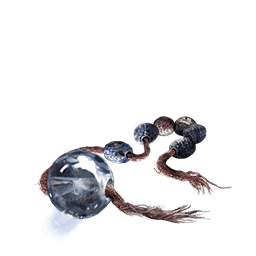
Forbidden Knowledge
Presented here are first new spells and then new magic items inspired by and for the lictor class, each in alphabetical order.
Abject Terror
5th-level illusion
- Casting Time: 1 action
- Range: Self
- Components: V, S, M (a shrunken head)
- Duration: 1 hour
- Spell Lists: Lictor
When you cast this spell, you can use its material component to force creatures of the same kind as the head used (for exa-mple, goblinoids or wolves) to have disadvantage on the save against it. You summon a pitch-black wave of your foes' worst nightmares. Each creature in a 60-foot cone must succeed on a Wisdom saving throw or use its reaction to move 10 feet back from you and become frightened for the duration.
While frightened by this spell, a creature can speak only in gibberish, is unable to cast spells with a verbal component, and takes 2d10 psychic damage at the start of each of its turns while it can see you. It also cannot hold or manipulate objects due to the quaking of its limbs. If the creature ends its turn in a location where it doesn’t have line of sight to you, the creature can make a Wisdom saving throw. On a successful save, the spell ends for that creature.
Baleful Touch
2nd-level necromancy
- Casting Time: 1 action
- Range: Touch
- Components: S, M (five drops of blood, phlegm, choler, or melancholy)
- Duration: 24 hours
- Spell Lists: Cleric, Druid, Lictor
Your touch inflicts disease. Make a melee spell attack against a creature within your reach. On a hit, the target is poisoned.
At the end of the poisoned target's next turn, it must make a Constitution saving throw. On a success, it is no longer poi-soned, and the spell ends. On a failure, the target is no longer poisoned, but choose one of the diseases below. The target is subjected to the chosen disease for the spell’s duration. The target can repeat its saving throw at the end of every hour it is afflicted by the disease, ending the spell on a success.
Brain Fog. The creature loses any special vision it has other than truesight, and it subtracts 1d4 from Intelligence, Wisdom, or Charisma ability checks or saving throws. If this effect causes it to fail a roll, it also takes 1d4 psychic damage.
Dizzying Sickness. At the end of each of the creature's turns, it falls prone. Standing from prone while afflicted by this disease costs an additional 5 feet of movement.
Gripsores. When the creature makes an attack roll that uses Strength or Dexterity, it takes 1d4 necrotic damage and drops whatever it is holding after the attack is resolved.
Lictor Spell List
1st Level
- armor of agathys
- bane
- cause fear XGtE
- corroding strike†
- detect evil and good
- detect magic
- detect poison and disease
- disguise self
- false life
- fog cloud
- hellish rebuke
- inflict wounds
- protection from evil and good
2nd Level
3rd Level
4th Level
5th Level
Lictor | v2.1
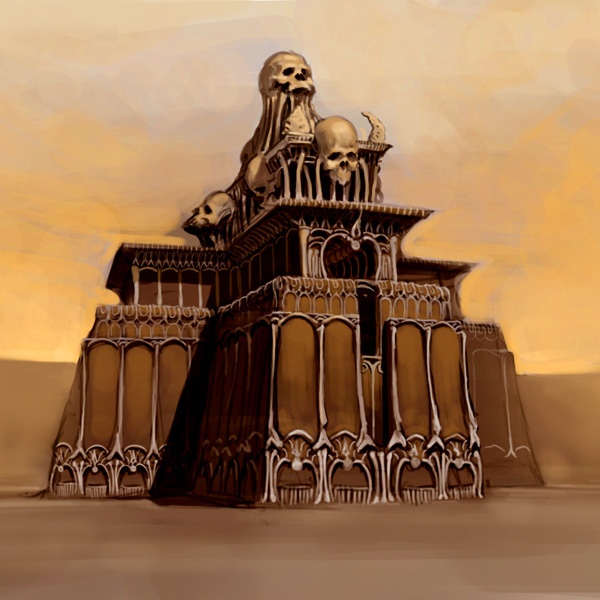


Credits
Lictor class symbol created by Phil Robinson, with assets by pdzoch & RPG Aid
Lictor intro art is '刹女' by Jin Xiaodi
Amulet is 'Waterflow Amulet' by Paolo Barbieri
Gold beetle is 'Beetle' by Sergey-UA
Skull gem is by Michael Clarke, copyright Fire Mountain Games
Apparition is 'Ghost Guardian' by 0B0
Clattering Legion is 'Fire Skeletons' by Jaan-Paul van Eeden
Shambling Flesh is 'Guild Wars 2 Concept Art' by Kekai Kotaki
Tomb Guardian & Credits page necropolis are concept art from Guild Wars: Nightfall, copyright ArenaNet/NCSoft
Tomb Guardian background dragon is 'Dragon Skull' by Ricardo Herrera
Tributes are by Eva Widermann
Underlich is 'Hel' by Yasen Stoilov
Vampire Ward is 'Vampire Pirate' by Sunshine Kim
Wailer is "Wendigo Warrior" by Alex Charleux
Old Parchment resource by Kimmo Mäkinen
Golden goblet is 'Skull Chalice of Ch'gakare', copyright Wizards of the Coast
Magical beads is 'Sekiro Prayer Breads', copyright FromSoftware/Activision
Bone Devil's Lash is 'Demonspine Whip' by Mark Hyzer, for the 'Alara Reborn', Magic the Gathering
Watercolour stains by /u/flamableconcreteSpecial thanks to u/Scientin, u/LiliumHaze, the Haven and Spectre Creations discord servers, and the users of r/UnearthedArcana: not to mention my ever-enthusiastic-and-effusively-edgy playtesters. Crawford, Lederov, Mae, Yvyr & Zethrukar: here's to you for making Shinmeth SUFFER and DIE!
Go to BLACK PUDDING PRESS for more 'brew!
Classes such as the support-based Gourmet, the beast-bonded Handler, and the ki-based Mystic; the Martial Talents system; & the homebrew compendium Hippocamper's Complete Cookbook!
Corroding Strike
1st-level transmutation
- Casting Time: 1 bonus action
- Range: Self
- Components: V
- Duration: Concentration, up to 1 minute
- Spell Lists: Artificer, Lictor
The next time you hit a creature with a melee weapon attack during this spell’s duration, your weapon is mottled with an entropic tarnish, and the attack deals an extra 1d6 acid or necrotic damage (your choice) to the target. Additionally, the target must succeed on a Dexterity saving throw or any nonmagical armor worn by it is partly sundered, taking a cumulative -1 penalty to the AC it offers until the spell ends. The armor is destroyed if the penalty reduces its AC to 10.
At Higher Levels. When you cast this spell using a spell slot of 3rd or 4th level, the initial extra damage dealt by the attack increases by 1d6, and the penalty the target takes to its AC increases to -2. When you use a spell slot of 5th level or higher, the initial extra damage increases by a further 1d6 and the penalty the target takes to its AC increases to -3.
Draw Breath
2nd-level necromancy
- Casting Time: 1 action
- Range: 30 feet
- Components: V, S
- Duration: Concentration, up to 1 hour
- Spell Lists: Bard, Druid, Lictor, Wizard
Inhaling a word of power, you beckon the breath from the body of a creature you can see within range. The target must make a Constitution saving throw. If it fails, you steal the creature's breath and cause it to begin suffocating. At the end of each of its turns, the target can make a Constitution saving throw. On a success, the spell ends. If the creature is still suffocating after a number of rounds have passed equal to its Constitution modifier, it falls unconscious.
While the spell lasts, you gain the ability to breathe in any special environments (such as underwater) that a target which failed its saving throw can normally breathe in.
Creatures that don't need to breathe are unaffected by this spell.
At Higher Levels. When you cast this spell using a spell slot of 3rd level or higher, you can target one additional creature for each slot level above 2nd.
Perfidious Flame
3rd-level necromancy
- Casting Time: 1 bonus action
- Range: 30 feet
- Components: V, S
- Duration: Concentration, up to 1 minute
- Spell Lists: Lictor, Warlock
You call upon the twisting fires of the Hells and choose a weapon you are wielding or an object no larger than 10 feet in diameter not being worn or carried within 30 feet of you to burst into cold, blue flames. The burning object sheds bright light in a 10-foot radius and dim light for an additional 10 feet. At the start of each of your turns, flammable objects not being worn or carried that are within the bright light shed by the flames catch fire, and remain ablaze until the spell ends.
The flames created and spread by this spell are deathly cold. Whenever a creature starts its turn in an area of flames created by the spell or is struck by a weapon lit ablaze by the spell, it must make a Constitution saving throw, taking 3d6 cold damage on a failed save, or half as much damage on a successful one.
As an action while the spell lasts, you can cause the flames created and spread by it to suddenly flare with unexpected heat. Creatures within 5 feet of the flames must succeed on a Constitution saving throw or take 5d6 fire damage, and the spell then ends.
At Higher Levels. When you cast this spell using a spell slot of 4th level or higher, the cold and fire damage
increases by 1d6 for each slot level above 3rd.
Sacrifice
1st-level necromancy (ritual)
- Casting Time: 1 minute
- Range: Touch
- Components: V, S, M (a dead body, which the spell consumes, and dagger worth at least 2 gp)
- Duration: Instantaneous
- Spell Lists: Cleric, Druid, Lictor, Wizard
You perform a sacrificial act upon a dead body to draw out a magical boon. A body that has no blood cannot be used as a component for this spell. When you cast the spell, choose one of the following rites, the targets of which must remain within 10 feet of you throughout the casting.
Accept Power. You touch one humanoid who wishes to be dedicated to a power that you serve. For the next 24 hours, whenever the target deals damage, it it can roll a d4 and add the number rolled to the damage dealt. A creature can benefit from this rite only once.
Claim Strength. You touch one willing creature whose alignment is not directly opposed to yours. The target's Strength or Dexterity score increases by 1 (up to a maximum score of 20) for 24 hours. Seven days must pass before a creature can benefit from this rite again.
Claim Vitality. A number of willing creatures within 10 feet of you up to your spellcasting ability modifier gain one additional Hit Die, which is not included in their usual total of Hit Dice. The Hit Die gained is equal in size to the Hit Dice of the creature whose body was used for the spell. A creature can benefit from this rite only once every 24 hours.
Mark of the Red Hand. You touch one willing creature and stain it with evidence of the death of the body used in the spell. For 24 hours, allies of the body used in the spell have disadvantage on attack rolls not directed at the target while it is within their sight. A creature can benefit from this rite more than once only if it is of an evil alignment.
Profane Water. You touch one flask or vial of water and cause it to become unholy water.
Uncanny Visage
3rd-level illusion
- Casting Time: 1 action
- Range: Touch
- Components: V, S
- Duration: 1 hour
- Spell Lists: Bard, Lictor, Warlock
You draw a perplexing mask across the face of a humanoid that you touch. The target's outward appearance resembles an unblemished humanoid face, but observers can tell that something is subtly wrong with it. Until the spell ends, creat-ures have disadvantage on Wisdom (Insight) and Charisma (Intimidation) checks made against the target. The disguised target can use its reaction when a creature it can see makes an attack roll against it to momentarily shift the mask into a shocking grimace, causing the attack to have disadvantage.
At Higher Levels. When you cast this spell using a spell slot of 4th level or higher, you can target one additional humanoid for each slot level above 3rd. The creatures must be within 10 feet of each other when you target them.
Withering Gaze
4th-level necromancy
- Casting Time: 1 action
- Range: Self (30-foot cone)
- Components: S
- Duration: Concentration, up to 1 minute
- Spell Lists: Lictor, Warlock, Wizard
Your eyes flash with contemptuous power and a wave of debilitating energy sweeps across all you gaze upon. Each creature in a 30-foot cone must make a Constitution saving throw. On a failed save, the target deals only half damage with weapon attacks that use Strength, and has disadvantage on Strength and Dexterity saving throws and ability checks that use Strength until the spell ends. A creature that cannot see you automatically succeeds on this save.
At the end of each of the target's turns, it can make a Constitution saving throw against the spell. On a success, the spell ends.
Unholy Water
Type: Adventuring Gear, Cost: 30gp, Weight: 1 lb.
As an action, you can splash the contents of this flask onto a creature within 5 feet of you or throw it up to 20 feet, shattering it on impact. In either case, make a ranged attack against a target creatu-re, treating the unholy water as an improvised weapon. If the target is a celestial, it takes 2d6 necrotic damage.
A good-aligned humanoid or beast that drinks this water must succeed on a DC 10 Constitution saving throw or become poisoned for 8 hours. While poisoned in this way, the creature has disadvantage on saving throws against effects that would change its alignment.
A cleric or lictor may create unholy water by performing a special ritual. The ritual takes 1 hour to perform, uses a vial of blood drawn from the wounds of good-aligned humanoid, and requires the caster to expend a 1st-level spell slot.
Bone Devil's Lash
Weapon (whip), very rare (requires attunement by a lictor)
You gain a +2 bonus to attack and damage rolls made with this magic weapon, which is fashioned from
the remains of a bone devil's spine-like tail.
While you wield it, the necromancy in you
animates the lash, granting it the Light pr-
operty and causing it to ignore resistance
to slashing damage.
When you attack a creature that is a vert-
ebrate with this weapon and roll a 20 on the
attack roll, the lash attempts to rip out the tar-
get's spine. The target must succeed on a Const-
itution saving throw against your lictor spell save
DC. On a failure, it loses its spine, and dies if it can't
survive without it. On a success, it is restrained until the
end of its next turn, and becomes immune to this effect
for 24 hours. A creature is also immune to this effect if it's immune to slashing damage, doesn't have or need a spine, has legendary actions, or is size Huge or larger. A creature that is unaffected by this property of the lash instead takes an extra 6d8 slashing damage from the hit.
A spine that is removed by this weapon becomes another bone devil's lash if a special ritual is performed on it within 24 hours of its removal. The ritual takes 1 hour to perform, must be conducted by a lictor or a wizard of non-good align-ment, and requires the caster to expend a 5th-level spell slot and coat the spine in the blood of a fiend of CR 9 or higher.
Countdown Candle
Wondrous item, very rare
The ivory wax of this candle has been shaped resemble a skeletal finger signaling the number one. As an action, you can light the candle while naming a creature known to you. Roll 5d100 and choose one of the results: after a number of hours have passed equal to the chosen result, the candle is burned down to a stump and the named cre-ature has power word kill cast upon it, no matter its location, so long as it is on the same plane of existence as the candle.
Once the countdown of the candle has begun, it cannot be stopped or snuffed by any means short of a wish spell.
Graven Signet
Wondrous item, uncommon (+1), rare (+2), very rare (+3) (requires attunement by a lictor)
This signet is a mark of a great and terrible necromancer's house, and of the office you once held. Carved by acid upon a ring, brooch, or buckle, its metal is angry-cold to the touch. You can use it as a spellcasting focus for your lictor spells.
While you wear the signet, you gain a bonus to the spell attack rolls and the saving throw DCs of your lictor spells. The bonus is determined by the signet’s rarity.
While wearing the signet, you can use your Unrelenting Animus feature without expending a spell slot. Once this property is used, it can’t be used again until the next dusk.
players who continue to make the
improvement of this class possible.
Musclebound Tome
Wondrous item, uncommon,
(requires attunement by a spellcaster)
Bound in sheets of fibrous flesh and straining tendons, this weighty tome flexes and writhes while at rest, and opens and snaps shut at a touch with great strength. The tome functions as a wizard's spellbook, and, when found, contains the animate dead spell within its ruddy pages.
While you are holding the book, you can use it as a spellcasting focus if you know at least one spell from the school of necromancy.
While you are carrying the book, any undead creatures under your control add your spellcasting modifier to their Strength score and have advantage on Strength checks and Strength saving throws.
Pox Manteau
Wondrous item, uncommon (requires attunement)
This mold-mottled cloak suppresses any effect that would cure diseases or poisons, as well as any effect that would make a creature immune or resistant to diseases or poisons, within 60 feet of the wearer. Constructs and undead are unaffected by the cloak.
Wondrous item, very rare, (requires attunement) Wearing these etched brass bracers grants you a +1 bonus to the attack and damage rolls of your unarmed strikes. As a bo-nus action when they are worn, you can spend a Hit Die to change your hands into painful, red-hot flesh for 1 minute. For the duration, your unarmed strikes deal extra damage equal to the Hit Die spent, and you take 2 fire damage each time you make a weapon attack.
After hitting a beast of humanoid with an unarmed strike while your hands are red-hot, you can brand the target with necromancy. The brand lasts for 24 hours. It can be removed early by the lesser restoration spell or similar healing magic. If a branded target dies and you are currently on the same plane of existence, it rises at the start of your next turn as a zombie permanently under your comm-and, following your verbal orders to the best of its ability. If it is not within hear-ing distance of your orders, it strives to find you at once.Wretched Bands of Branding





Lictor: Optional Features
This section offers additional features that you can gain as a lictor. Unlike the features in the primary class document, you don’t gain the features here automatically. Consulting with your DM, you decide whether to gain a feature in this section if you meet the level requirement noted in the feature’s description. These features can be selected separately from one another; you can use some, all, or none of them.
Wrack Foes: Wrack with Chills
3rd-level lictor feature
When you gain this feature, you can choose to replace the Wrack with Pain effect of your Wrack Foes feature with the following effect, instead:
You freeze the blood of foes within your grave aura. Creat-ures of your choice within 10 feet of you must succeed on a Constitution saving throw or take 2d8 cold damage and have their speed halved until the start of your next turn. A creature that fails this save by 5 or more has its speed reduced to 0 for the duration and gains a level of exhaustion.
Martial Versatility
4th-level lictor feature
Whenever you reach a level in this class that grants the Ability Score Improvement feature, you can replace a fighting style you know with another fighting style available to lictors. This represents a shift of focus in your martial practice.
12th-level lictor feature If you're being sustained by your Unrelenting Animus and use a feature other than your Spellcasting that would normally expend a lictor spell slot or Hit Die, the spell slot or Hit Die is not expended. You can gain this benefit only once per turn.
See a clear gap for an Optional Feature? Let me know for when the lictor rises again as v2.2.Extremis
Fresh Blood